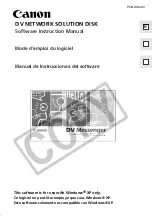
Out-of-Band NAC Design Procedures
Enterasys NAC Design Guide 5-23
It
is
important
to
note
that
only
the
NAC
Gateways
that
are
configured
with
remediation
and
registration
functionality
need
to
be
positioned
in
such
a
manner.
All
other
NAC
Gateways
may
be
positioned
at
any
location
on
the
network,
with
the
only
requirement
being
that
access
layer
switches
are
able
to
communicate
to
the
gateways.
Typically,
the
NAC
Gateway
with
remediation
and
registration
functionality
is
positioned
on
a
network
segment
directly
connected
to
the
distribution
layer
routers
on
the
enterprise
network,
so
that
any
HTTP
traffic
sourced
from
quarantined
end
‐
systems
that
are
connected
to
the
network
ʹ
s
access
layer
can
be
redirected
to
that
NAC
Gateway.
As
an
alternative,
the
NAC
Gateway
may
be
positioned
on
a
network
segment
directly
connected
to
the
router
providing
connectivity
to
the
Internet
or
internal
web
server
farm.
In
this
scenario,
the
HTTP
traffic
sourced
from
quarantined
end
‐
systems
would
be
redirected
to
the
NAC
Gateway
before
reaching
the
Internet
or
internal
web
servers.
4. Identify Backend RADIUS Server Interaction
If
a
NAC
Gateway
is
receiving
802.1X
and/or
web
‐
based
authentication
requests
for
connecting
end
‐
systems,
then
a
backend
RADIUS
server
must
be
configured
to
validate
end
user
credentials
in
the
authentication
process.
For
each
NAC
Gateway,
a
primary
and
secondary
RADIUS
server
can
be
specified
for
the
validation
of
user/device
network
login
credentials
on
the
network.
If
802.1X,
web
‐
based,
or
RADIUS
authentication
for
switch
management
logins
is
implemented,
a
RADIUS
server
with
backend
directory
services
must
be
deployed
on
the
network.
A
RADIUS
server
is
not
necessary
if
only
MAC
authentication
is
deployed
on
the
network.
All
RADIUS
servers
supporting
RFC2865
and
subsequent
RADIUS
standards
are
supported
by
Enterasys
NAC
appliances
when
proxying
RADIUS
authentication
requests.
Tests
have
been
conducted
on
the
following
RADIUS
servers:
•
FreeRADIUS
•
Microsoft
IAS
•
Funk
Steelbelted
RADIUS
•
Cisco
ACS
5. Determine End-System Mobility Restrictions
While
Security
Domain
‐
specific
MAC
and
user
overrides
can
be
configured
to
control
end
‐
system
and
end
user
mobility
across
the
network
and
between
Security
Domains,
the
“Lock
MAC”
feature
allows
the
network
administrator
to
restrict
network
access
for
specific
end
‐
system
to
a
switch
port
or
switch.
The
end
‐
system
can
be
denied
network
access
with
a
RADIUS
Access
‐
Reject
message
returned
to
the
switch,
or
assigned
a
specific
policy
or
VLAN
when
connecting
to
the
network
in
a
restricted
area.
Here
are
some
examples
of
how
the
Lock
MAC
feature
can
be
used:
•
A
printer,
server,
or
other
end
‐
system
could
be
allowed
network
access
only
when
it
is
connected
to
a
port
specified
by
IT
operations.
This
prevents
security
issues
that
could
result
if
the
device
was
moved
to
a
different
area
of
the
network.
•
An
IP
phone
with
a
MAC
override
could
be
locked
to
a
specific
port
on
a
switch.
This
would
allow
exact
identification
of
the
phone
ʹ
s
location
in
case
an
emergency
(911)
call
was
placed
from
the
phone.
Summary of Contents for 9034385
Page 1: ...Enterasys Network Access Control Design Guide P N 9034385...
Page 2: ......
Page 4: ...ii...
Page 8: ...vi...
Page 22: ...Summary 1 12 Overview...
Page 98: ...Additional Considerations 5 34 Design Procedures...











































